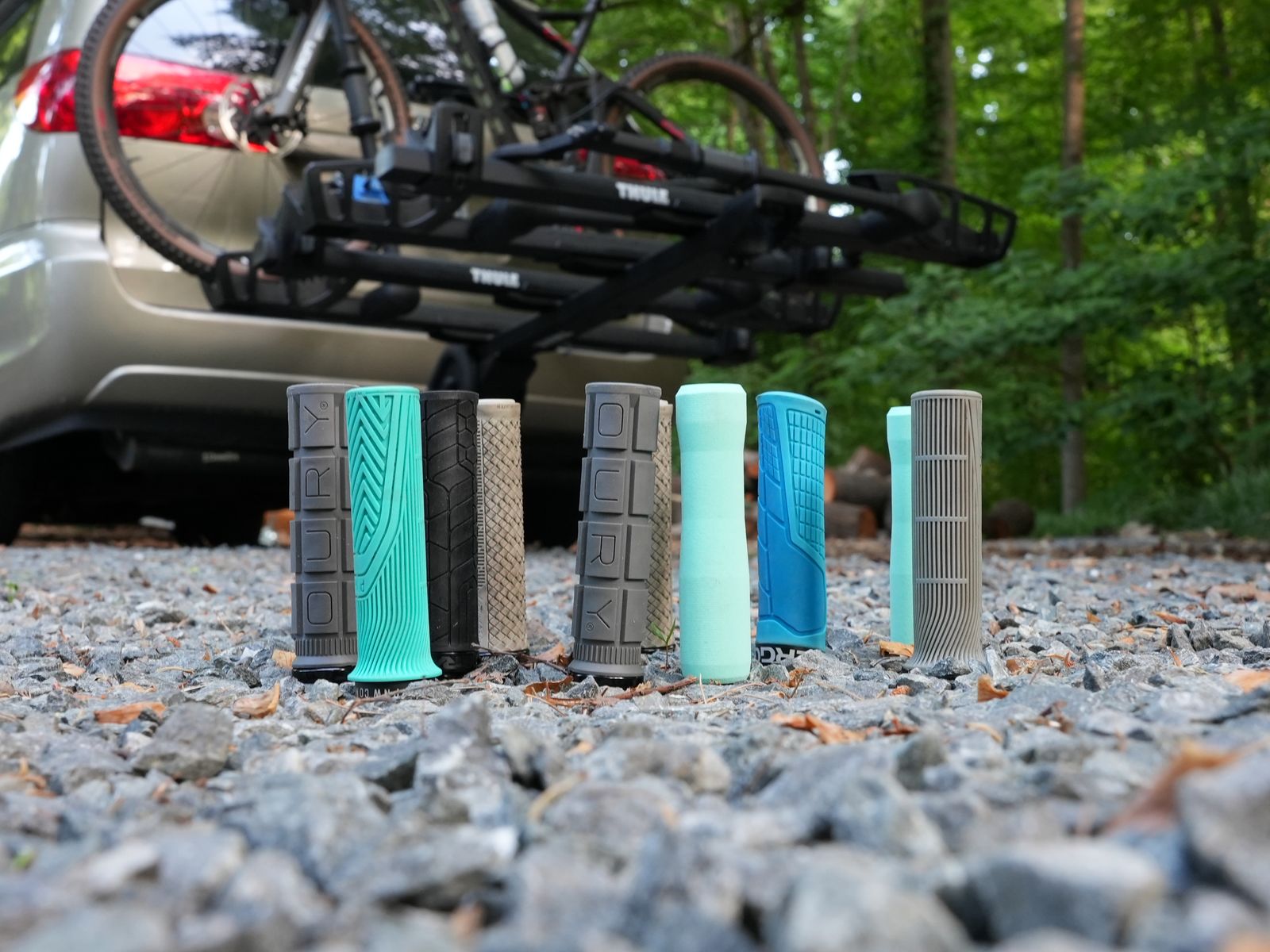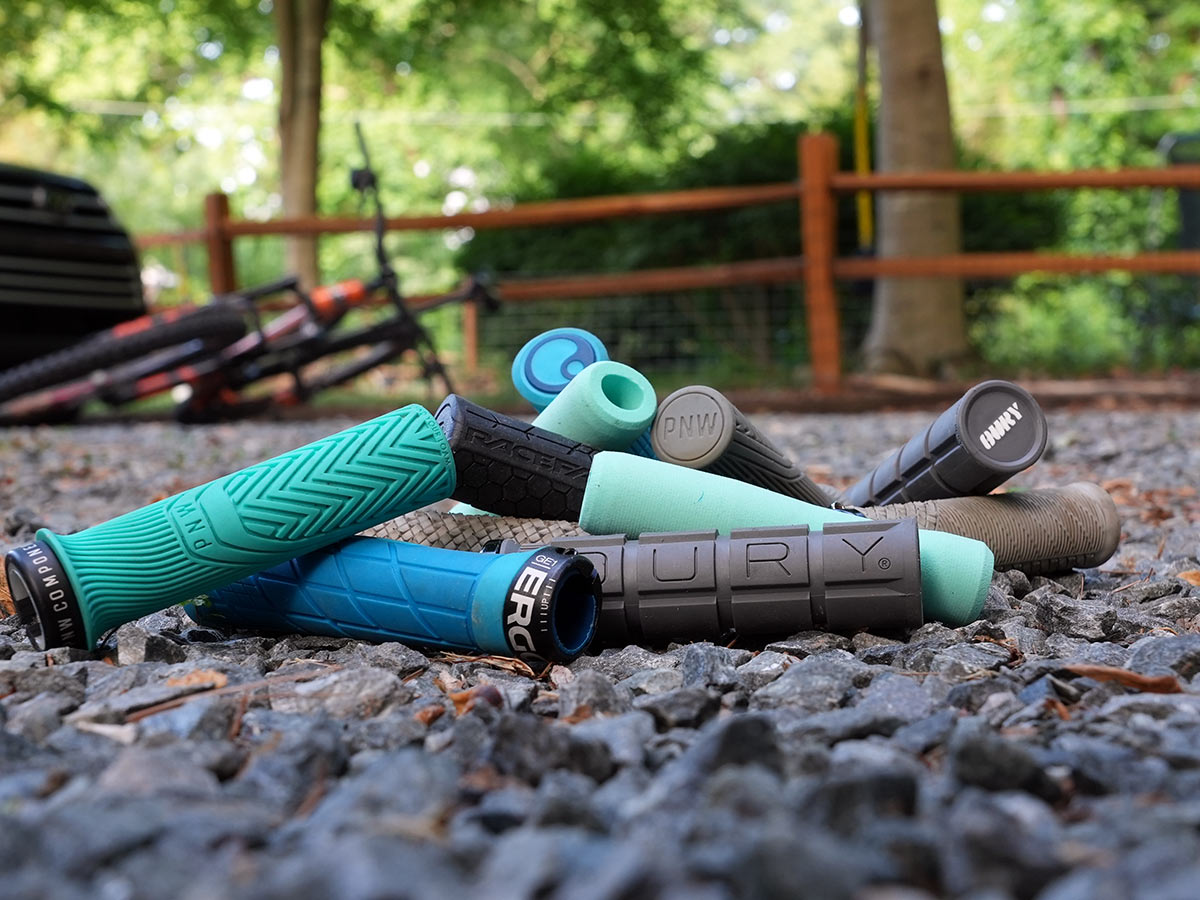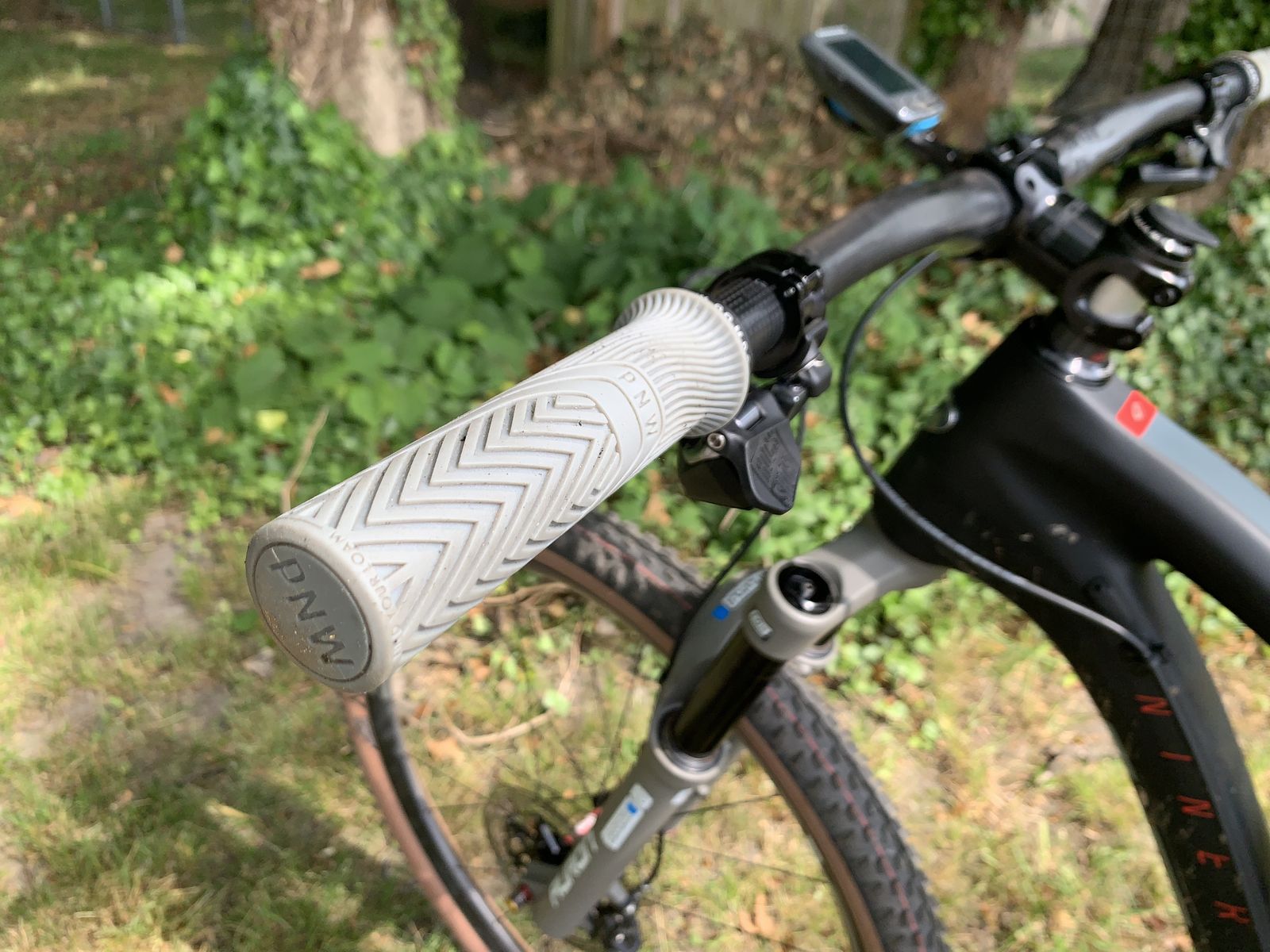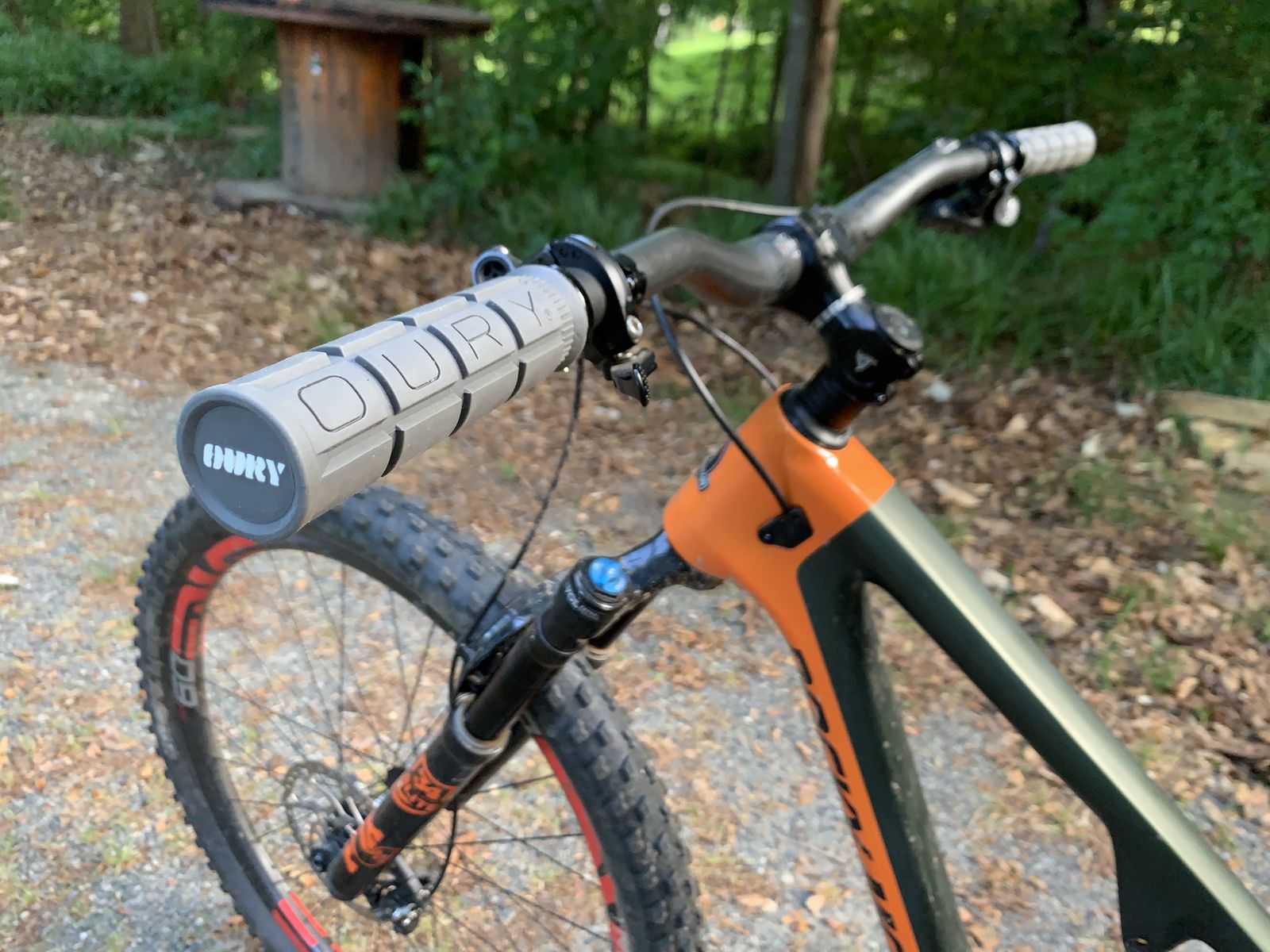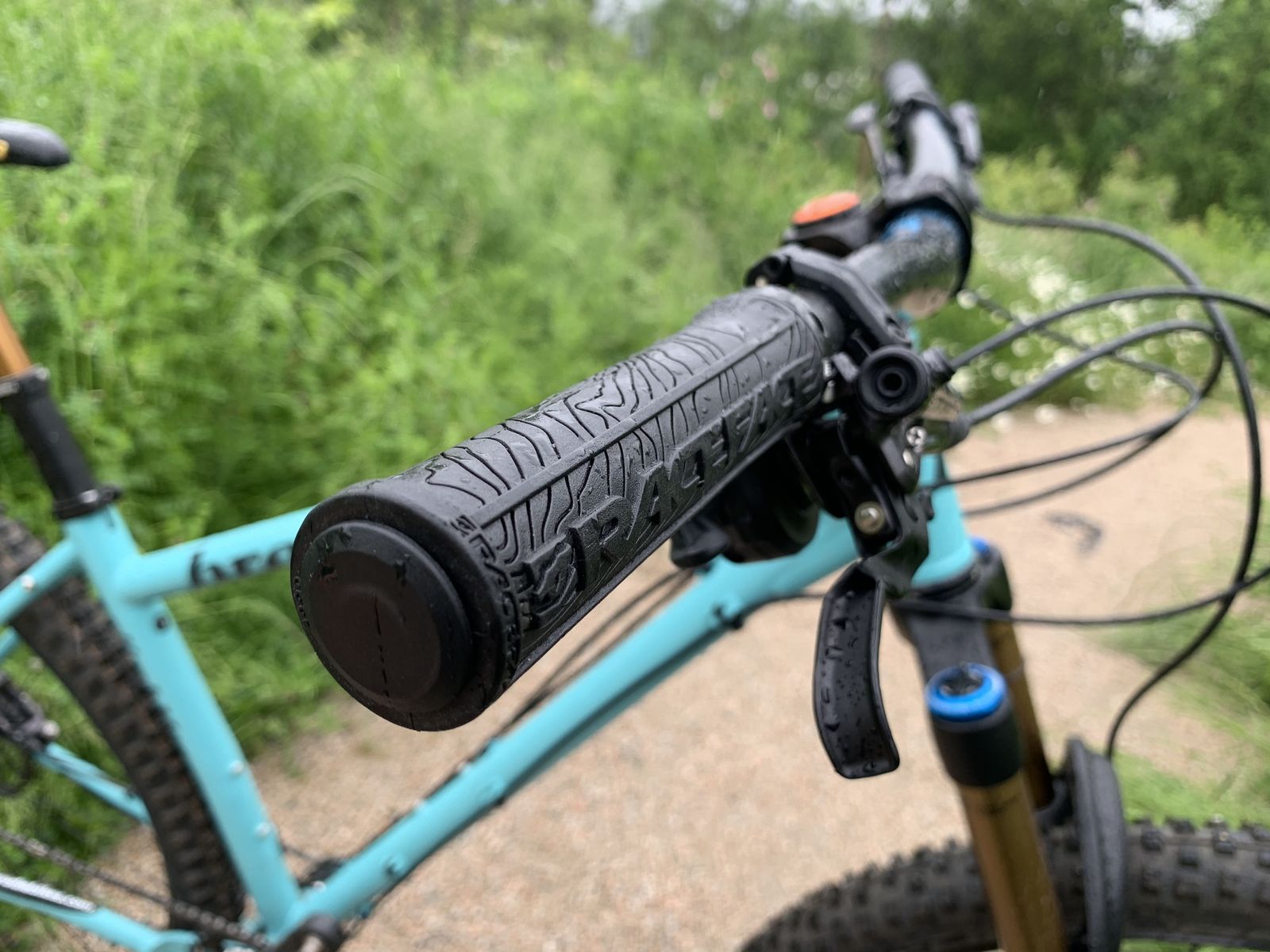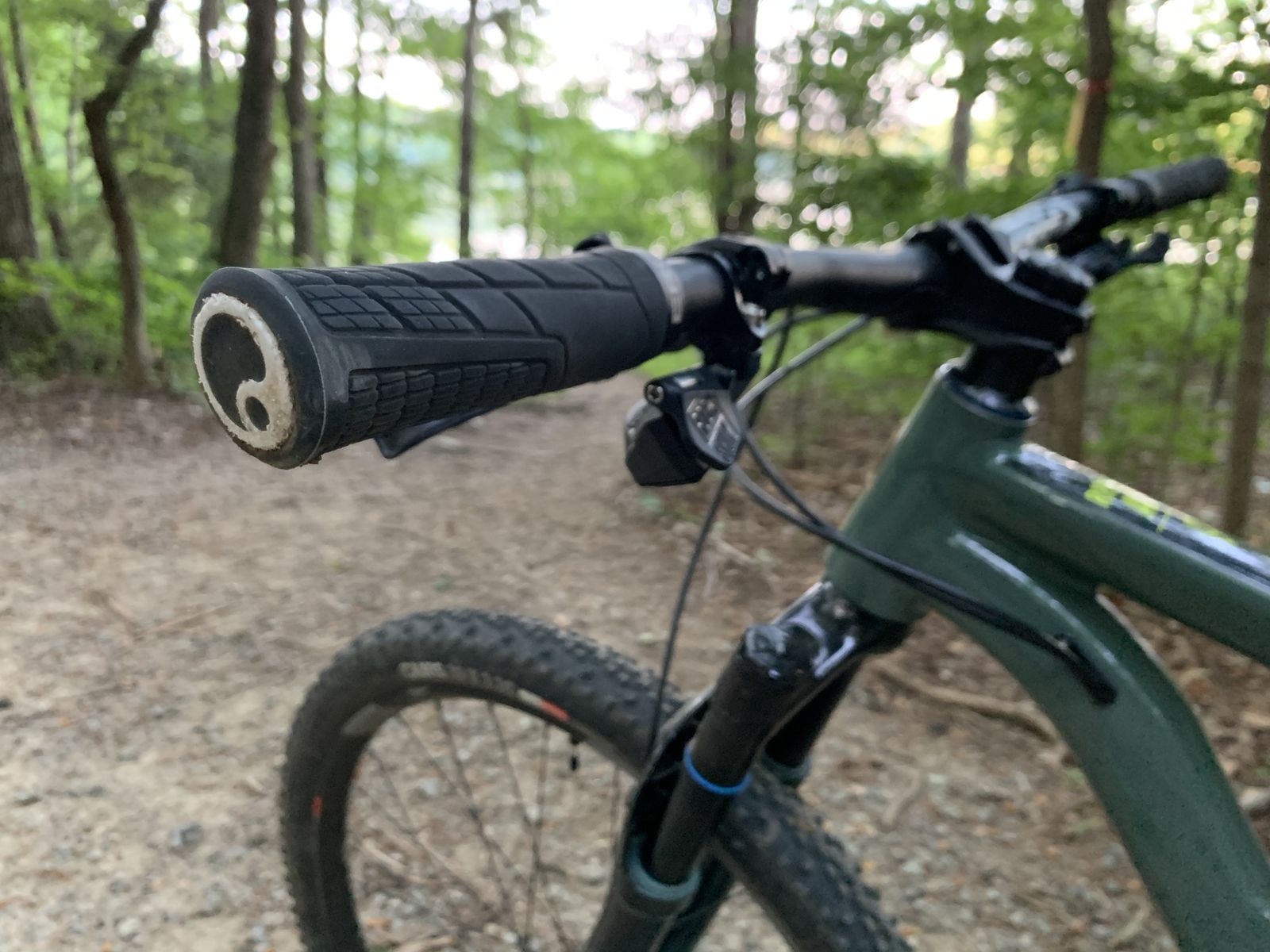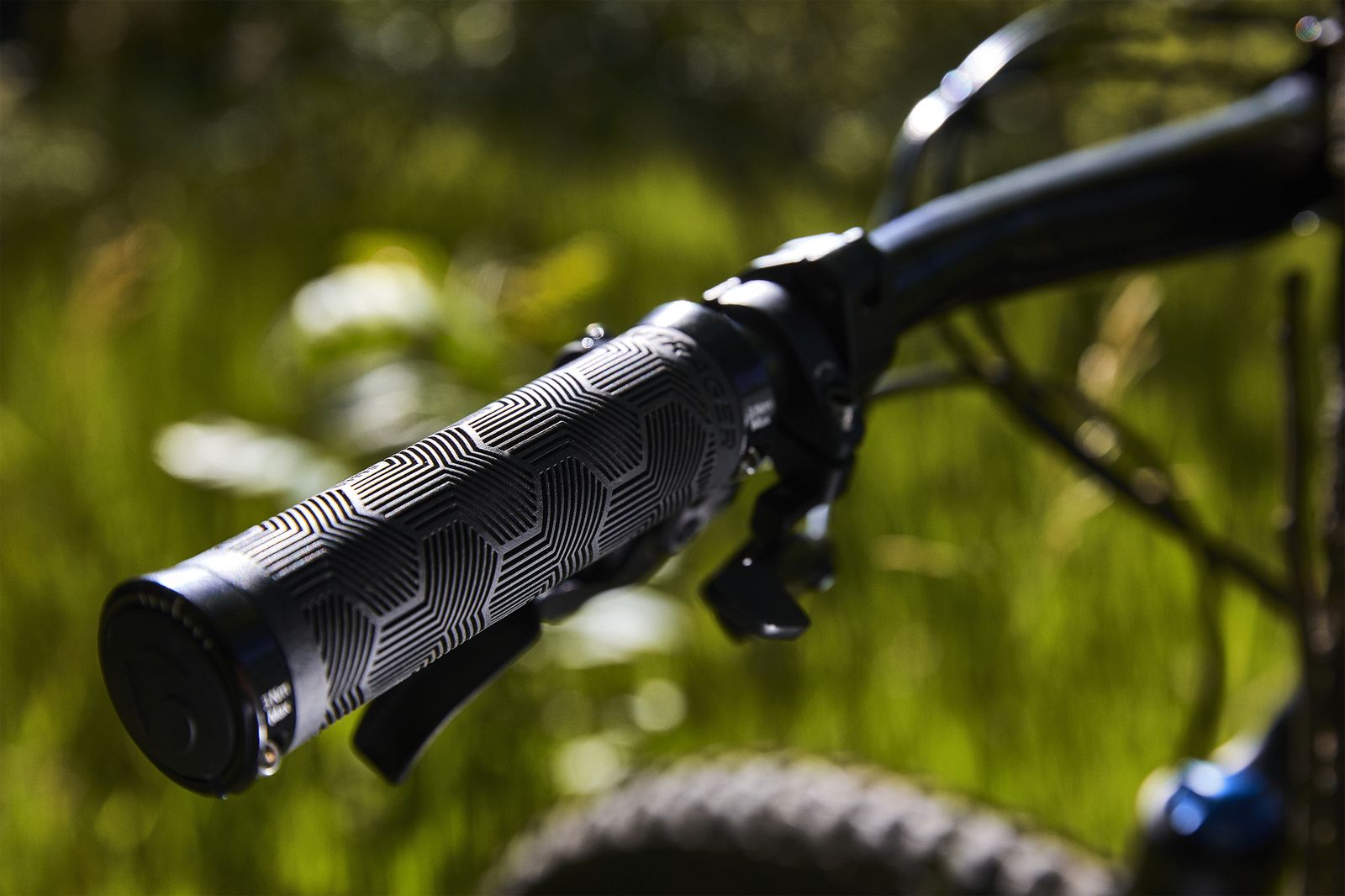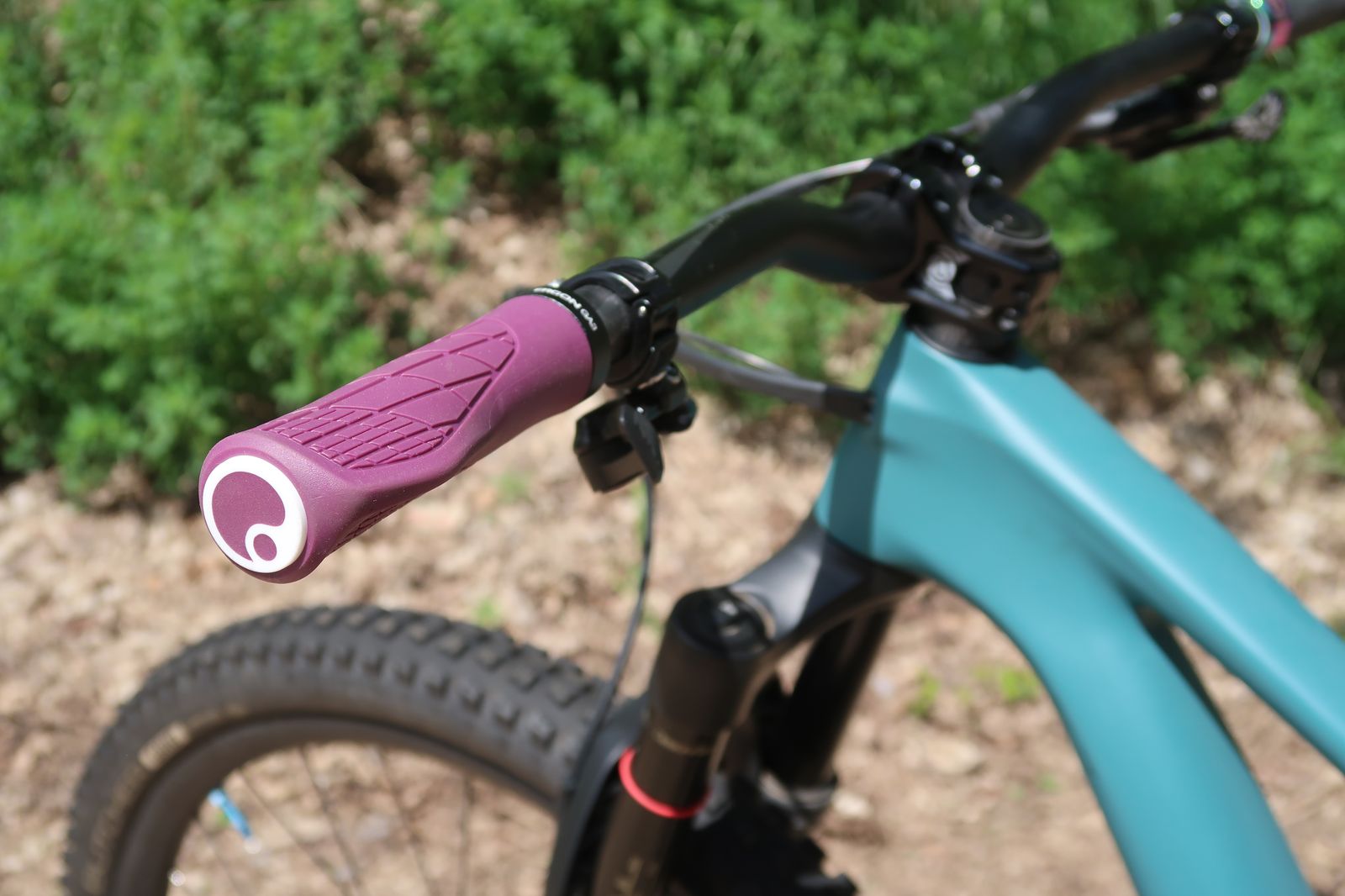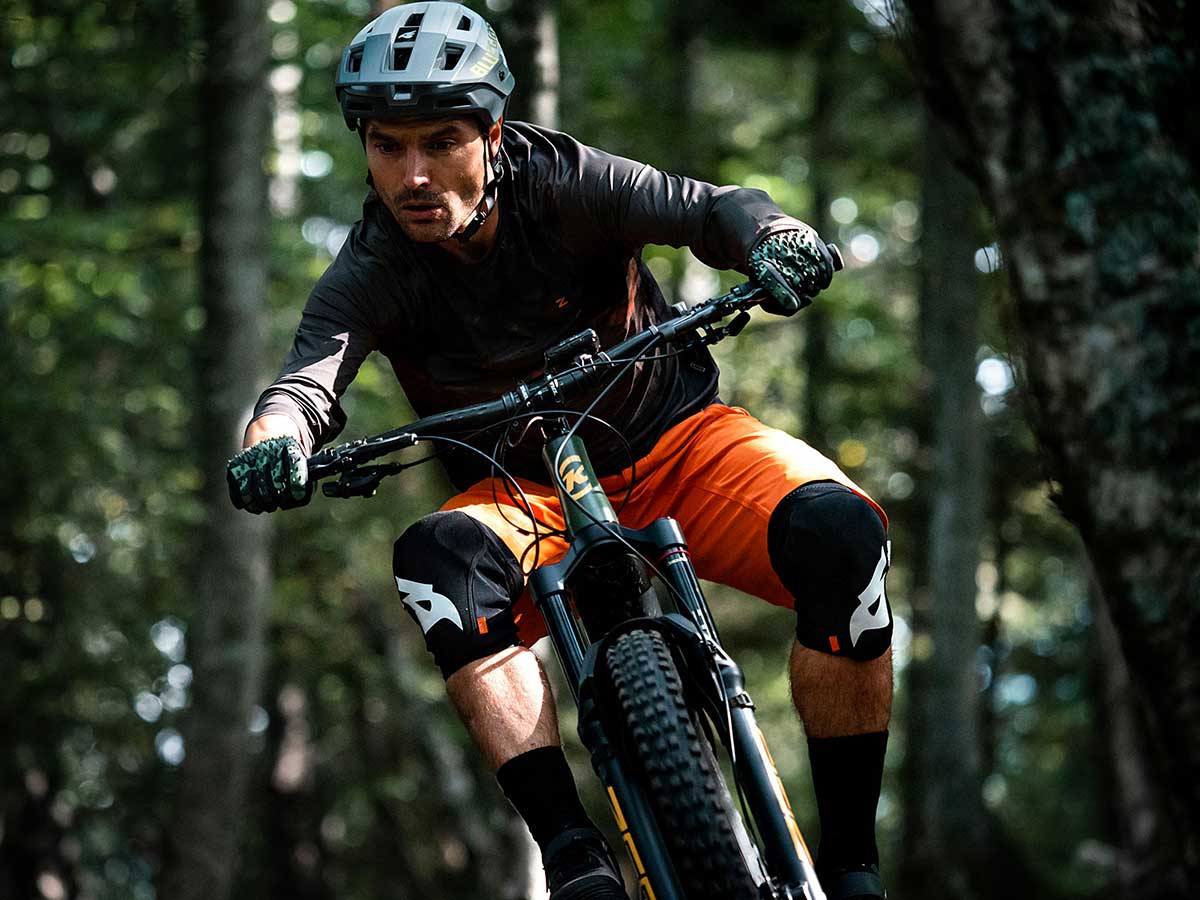Mountain bike grips seem simple, but in reality, an MTB grip is going to be the part of the mountain bike that you spend the most time connected to. So finding the grip that’s right for you is key.
Mountain bikers rely heavily on their grips: A good grip will be tacky enough that a bump won’t send your hand flying off the bar; soft enough that the vibration as you smash into a rock garden doesn’t send pins and needles up your arms; and just the right diameter to feel comfortable when you wrap your hands around it, whether you’re hanging on for dear life or just cruising. They also work best when paired with the best mountain bike handlebar.
We’ll be honest: At first glance, beyond color and texture, many grips look similar. But the Bikerumor staff has tested dozens of options over the years, and has narrowed down our favorites to these tried-and-true options that’ll work no matter what kind of riding you’re doing. Remember though, choosing the grip that’s right for you is a pretty personal thing, so you may run through a couple options before finding the one that you love.
Table of Contents
These are the Best Mountain Bike Grips
BEST OVERALL: PNW Loam Grips
When it comes to a basic grip that hits all the right notes, PNW Loam Grips gets the ‘best all-around’ nod for simply being a really comfortable, long-lasting MTB grip. Its measurements are about as average as a set of grips can get: 30mm in diameter and 133.5 mm in length, the grips will fit most riders’ hands comfortably. The weight for the pair—90 grams—isn’t ultralight, but it’s not heavy either.
The lock-on style grip stays in place perfectly on the bars and has contrasting patterns in the rubber to increase traction, and the tapered design puts a bit more cushion under the outside of your palm. The grips are sticky but don’t pick up grit from the ground when set down, and PNW offers a lifetime warranty so you know you’re covered. They’re available in nine bold colorways.
- Diameter: 30mm
- Length: 133.5mm
- Weight: 90g/pair
- Colors: Teal, orange, black, gray, red, purple, green, tan, and blue
- Price: $24
PROS: Comfortable for most riders, great range of colors, long-lasting
CONS: Closed-end means no way to store in-bar tools
BEST FOR BIG HANDS: OURY Single-Sided Lock-On V2
Now owned by Lizard Skins, the latest version of the legendary OURY grips finally have a lighter single-sided lock-on option. These are a great option for bigger-handed riders thanks to a padded design that breaks the grip into four large chunks instead of smaller segments. Despite the fact that they’re actually a bit shorter than an average grip at 127mm, they conform to a larger grip better than most.
Bonus: These make a great gift since you can personalize them by engraving the ring if you buy them through the Lizard Skins site for an additional $5. Though these are lock-on grips, they come with a bar end plug, which means you can stash an in-bar tool in your handlebars.
- Diameter: 33mm
- Length: 127mm
- Weight: 122g/pair
- Colors: Teal, red, “candy red”, and blue
- Price: $32
PROS: Super squishy, great for big hands
CONS: Not ideal for small hands
BEST TACKY GRIP: Race Face Half Nelson
These low-profile MTB grips from Race Face are made with the grippiest rubber around, so that on your first ride, they’ll already feel worn in. And regardless of whether or not you wear gloves, and regardless of the weather, you won’t ever deal with a hand slipping off the bar.
Available in nine colorways, the Half Nelson grips are fairly lightweight at 92 grams for the pair. They’re slim—just 29 mm in diameter—so even riders with small hands should find them easy to hang onto. And while most grips don’t differentiate between right and left, these are actually labeled and have been shaped to shed water and conform to your grip. The Half Nelson’s lock-on also has an end cap, so you can stash your in-bar tool without a problem.
- Diameter: 32mm
- Length: 133mm
- Weight: 90g/pair
- Colors: Teal, orange, black, gray, red, purple, green, yellow, and blue
- Price: $27
PROS: Tacky in any conditions, great color options
CONS: Not plush, might be too small for big hands
BEST ENDURO GRIPS: Ergon GE1 Evo Factory
You can’t argue with the brand Ergon when it comes to ergonomics—it’s in the name. Simply put, the GE1 Evo Factory grips are designed to feel ultra-grippy and handle the more aggressive riding style that enduro riders use. Ergon designed the grips for the way your hands grip the bars in an aggressive riding position—think elbows out, standing up out of the saddle, moving the bike from side to side. They’re even optimized for wider handlebars, with plastic scuff guards on the ends so they’re more likely to deflect off trees rather than get hung up and send you flying.
The rubber itself is unique to the brand, and Bikerumor testers have found it to be extremely grippy and long-lasting, no matter what you put them through. These GEI Evo Factory grips are right- and left-specific, and even have a recommended “top” side, to best match the position your hands will be in when getting rowdy.
- Diameter: 32mm
- Length: 135mm
- Weight: 119g/pair
- Colors: Black, orange, and moss
- Price: $45
PROS: Great for aggressive riding, long-lasting, grippy
CONS: No way to add a bar-end tool, slightly heavier than average, pricier
BEST FOR WEIGHT WEENIES: ESI Racer’s Edge
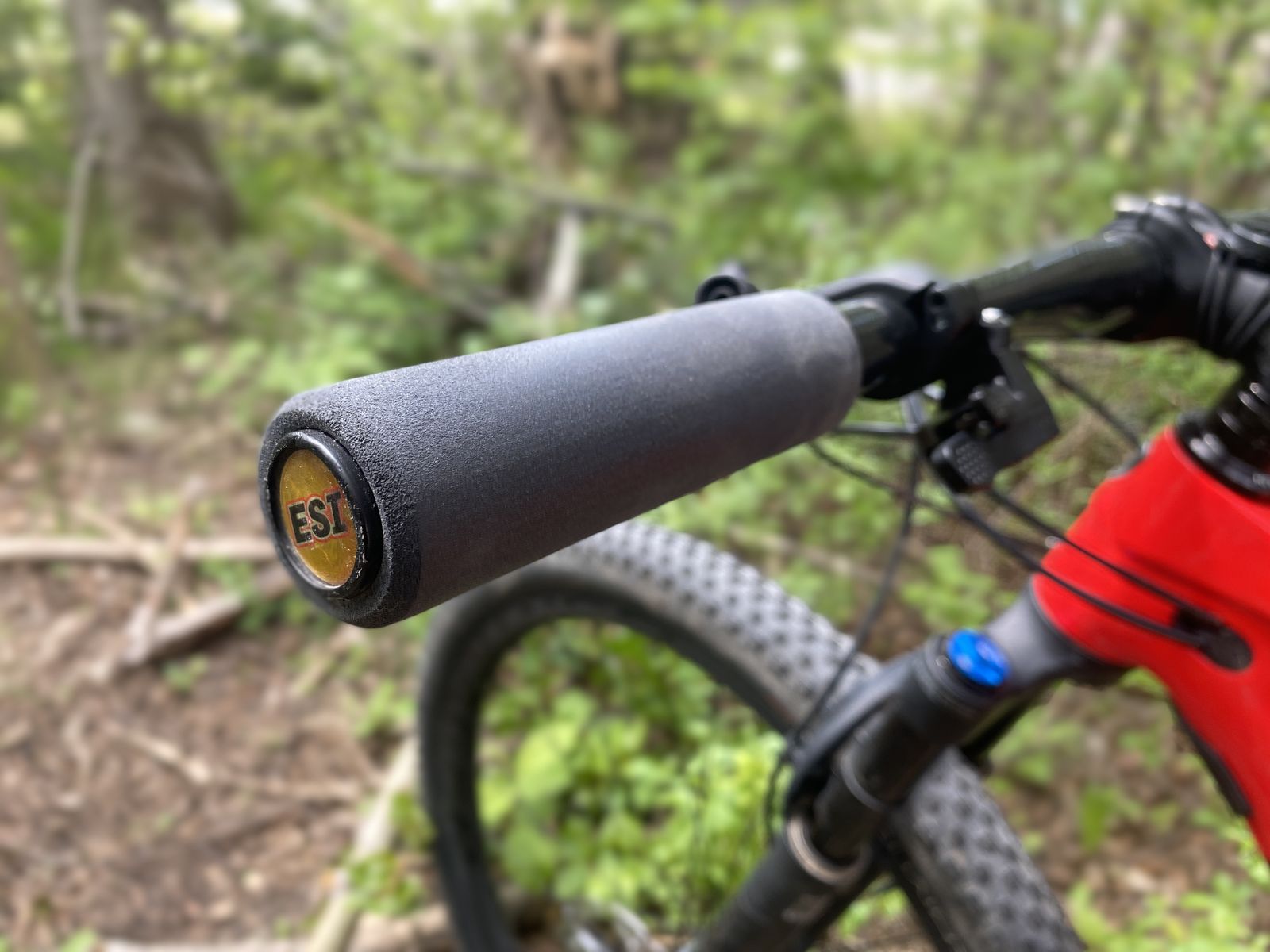
ESI Racer’s Edge grips are ultra-simple and—most importantly—extremely lightweight. Weight weenies can rejoice about $19 MTB grips that weigh a mere 50 grams, roughly half of what a normal set of grips weighs. Admittedly, with the weight decrease, you also lose some durability since the grips are made with silicone foam and show wear much faster than a tougher rubber compound.
Despite the lightweight, the foam is incredibly comfortable, though Bikerumor testers noted that it’s best to wear gloves when using these grips in hot or wet conditions, as they get a bit slippery if your palms get sweaty. ESI is also one of the few brands making parts in the USA, so if you prefer buying American-made, ESI is a great choice. They’re available in 8 colors (avoid white, these get dirty in a hurry).
- Diameter: 30mm
- Length: 130mm
- Weight: 50g/pair
- Colors: Aqua, black, blue, gray, green, orange, red, white, and yellow
- Price: $20
PROS: Extremely lightweight, inexpensive
CONS: Not the easiest installation, shows wear quickly
BEST BUDGET: Bontrager XR Trail Comp
When Bontrager released their XR Trail grips, riders looking for a more sustainable option rejoiced, since the inner core of the Bontrager XR Trail Comp is made from recycled plastic sourced from landfills and oceans by Plastix.
At $20, these long-lasting grips are based on their pricier Elite and Pro XR counterparts and share most of their characteristics. The rubber is patterned with a texture that reminds us of our childhood bikes, and at 31mm in diameter, it’s comfortable for most hand sizes. The XR Trail Comps are no-frills, but they’re also some of the lightest non-foam grips around!
- Diameter: 31mm
- Length: 130mm
- Weight: 88g/pair
- Colors: Roarange, black, volt, olive-grey, and Mulsanne blue
- Price: $20
PROS: Inexpensive, uses recycled materials, lightweight
CONS: Closed-end so you can’t use a bar end tool, limited colors
BEST FOR ALL-DAY RIDES: Ergon GA3
Wings on grips aren’t as popular as they used to be, since they can make your grip less secure on technical terrain, particularly on descents. But for riders who generally skip super-gnarly sections and focus on going long —whether it’s a 24-hour endurance race or a bikepacking adventure— wings can alleviate a lot of the pressure on your hands.
The mid-sized wings on the Ergon GA3 hit the sweet spot between being small enough to keep a secure grip in mildly technical terrain while still offering a lot of palm support. The GA3 is one of the few grips available in two sizes—30 and 32 mm diameter options—so riders with smaller hands can still get the comfort of an added palm platform without losing the ability to grip onto the bars tightly.
Like the GE1 Evo grips from Ergon, the rubber compound is ultra-grippy, and it’s UV stable so the color won’t fade after a few rides. Bonus: Ergon’s seven colorways are awesome, so you can choose a color for your grips that matches your bike or kit, or go for basic black.
- Diameter: 30 and 32mm
- Length: 133.5mm
- Weight: 90g/pair
- Colors: Dark blue, black, orange, red, purple, yellow, and blue
- Price: $35
PROS: All-day comfort, long-lasting
CONS: Soft rubber gets dirty easily, requires frequent cleaning to stay fresh, wings make technical riding tougher
Frequently Asked Questions About Mountain Bike Grips
Why can’t you use the grips that come on the mountain bike?
You definitely can use the grips that came on your mountain bike, but they’ll wear out eventually. And they’re usually pretty basic. The grips that we’ve included in this list are typically grippier, more comfortable, more durable, and/or lighter – all of which will give you better control and increase your overall enjoyment of your bike.
They’re also a fairly inexpensive component to swap: Even the priciest grips on this list are under $40. By comparison, the other touchpoint of your bike that you can change for more comfort—your saddle—could easily run you over $150. Plus, you might just want to spruce up your bike by picking a fun color for your grips that matches your kit, shoes, or helmet!
When do you need new grips?
Even if you loved the grips that came on your mountain bike, like tires, they will eventually wear out. You should replace your MTB grips if the rubber starts to get super-sticky and picks up dirt, the grippy texture wears off, or crashes tear the soft material.
Another reason you might need new grips, though, is if you start noticing discomfort in your hands or wrists. If you feel like your hands are constantly numb or tingling, you’re getting calluses or blisters, or even if you’re noticing that the color from the grips is rubbing off on your hands, it’s time for a new pair.
What measurements matter for grips?
When shopping for grips, most manufacturers will list a few basic measurements—diameter, length, and weight—but what do those measurements mean, and is bigger always better?
- Diameter: This is how wide your grips are (some companies also give you the circumference). Typically this will be between 25 and 40mm, but most come in around 30 to 32mm, which seems to be the sweet spot for most riders. Smaller diameters are easier to grip, especially in technical terrain, and won’t fatigue your grip muscles as quickly. But they have less cushion to reduce vibration and impacts and can create pressure points for heavier riders or those with big hands. Larger diameter grips can be harder to hold onto and fatigue your grip muscles faster – that’s why bodybuilders train with fat grips on the bars, it works those muscles much harder! But they usually have more cushion to reduce vibrational fatigue, so they work well for flat courses or people with really big hands.
- Length: This is how long the handlebars are from end to end. Most are between 128 and 140 mm, though 130 to 135 mm is the average.
- Weight: This is how heavy the grips are—but be careful when surfing brand websites since some will list them as a pair and others will list the weight for a single grip. The lightest grip we have on this list is 50 grams (the ESI Racer’s Edge), but most are around 90 to 110 grams for the pair, and some go slightly higher, especially as they get more comfort-oriented.
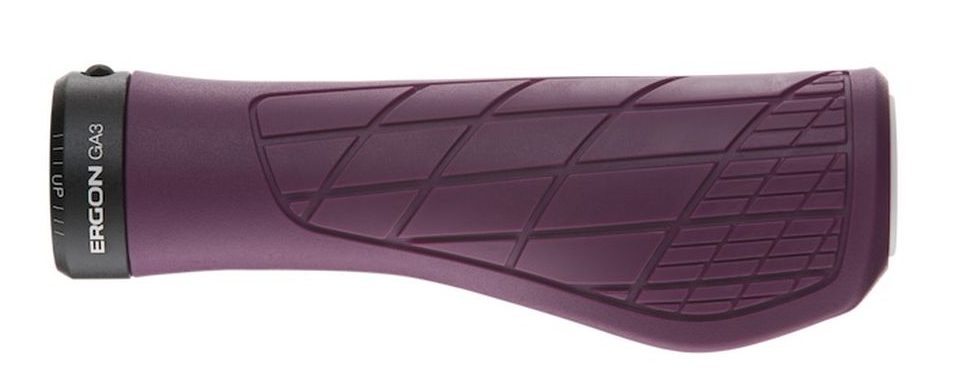
Why do some grips have wings?
While wings might make a grip a little less easy to hang onto as you navigate bumpy technical sections, the wings provide a more comfortable spot for hands to relax and rest so you’re not death-gripping all day. If you’re a more technical rider, wings are likely not going to be the best bet for you, but if you love riding fairly easy trails for hours at a time, or if you tend to have hand cramps, then a winged option like the Ergon GA3 might be ideal for you.
What’s the difference between lock-on and slide-on grips?
Lock-on grips are made with a hard plastic base, then the grippy rubber that your hands connect with is on top of the plastic. Slide-on or push-on grips don’t have hard plastic, they’re made entirely out of silicone, foam or rubber. They tend to be lighter and feel more “plush” because the rubber or silicone is thicker than it will be on a lock-on grip that needs to dedicate some of its diameter to the inner hard plastic.

Should you choose a lock-on or push-on MTB grip?
You should mostly base your decision on comfort, though weight can certainly be a factor if you’re counting every gram. But you also may want to consider the style of bar end that the grips have: Many lock-on grips (like the PNW Loam) have a closed outside edge that will prevent you from using in-bar tool kits from brands like WTC, Sahmurai, or Lezyne, which can tuck into the end of your bar so you always have a multitool securely fastened in your bike.
How do you install new MTB grips?
Lock-on grips are easy to install since their inner hard plastic just slides onto your handlebar. They get their name because they have clamps on one or both ends that you tighten with a small bolt. This “locks” them onto your bar and, as long as you follow recommended torque specs, prevents them from rotating while riding. This is important because if they twist while you’re riding, your hand could roll off and you could wreck.
Push-on grips, also known as slide-on grips, will be trickier to install since there’s no hard plastic, just a soft, usually tacky material that needs to slide onto your bars. They are often a pretty tight squeeze. Use rubbing alcohol to wipe down your handlebar before you start the installation, and a little extra poured into the grip helps it slide on easier.
ESI’s founder makes it look really easy in the video above, but you should give yourself time to get this job done: Don’t try to put new push-on grips onto your bars five minutes before the group ride! We recommend letting them dry overnight to ensure a secure, um, grip.
And remember, you always want your bar ends to be plugged (all grips come with some kind of cover for the end of the handlebar). Leaving those uncovered can be dangerous in the event of a crash.
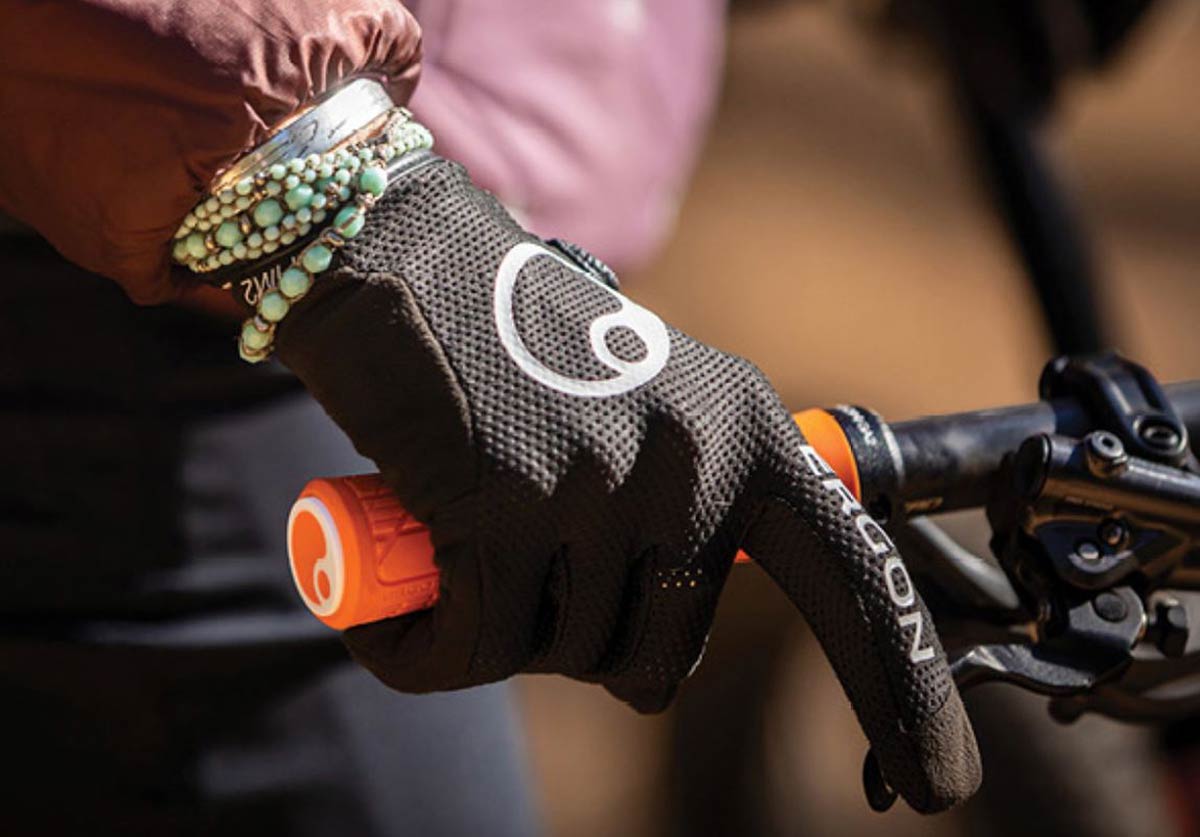
Do you need MTB gloves with MTB grips?
It all comes down to personal preference. If you’re riding a technical trail, MTB gloves are a good idea so that if you do crash, your hands are saved from small cuts and scrapes. You may also find that wearing mountain bike gloves makes for better traction between your hand and the grips, especially if your hands swear a lot, but most grip compounds are designed with bare hands and gloves in mind.
The one outlier is foam grips, like the ESI Racer’s Edge ones recommended here. They’re super grippy with gloves, but we’ve found them to be a little too slippery when our bare palms got sweaty (or the grips get wet).
